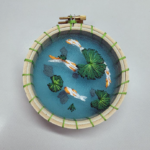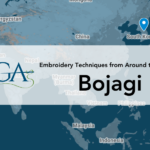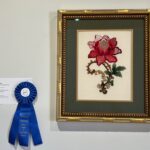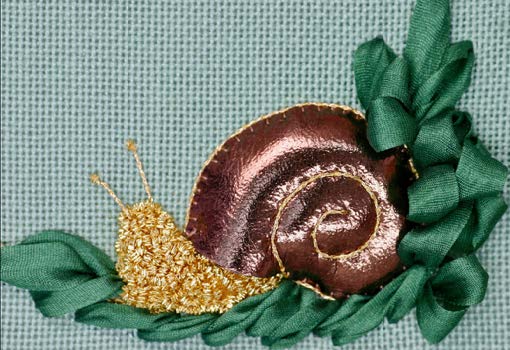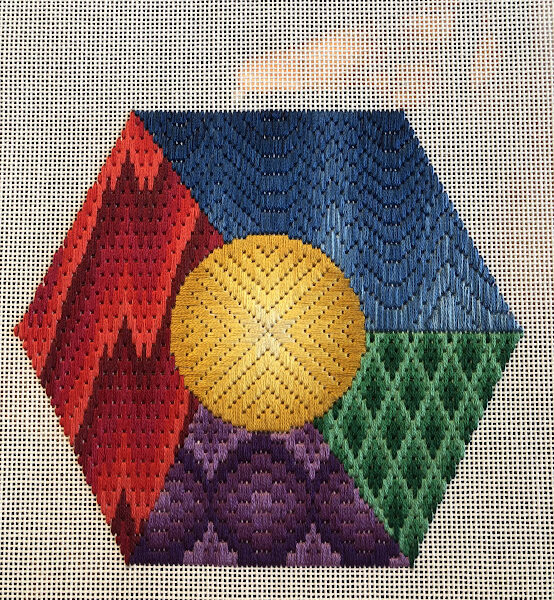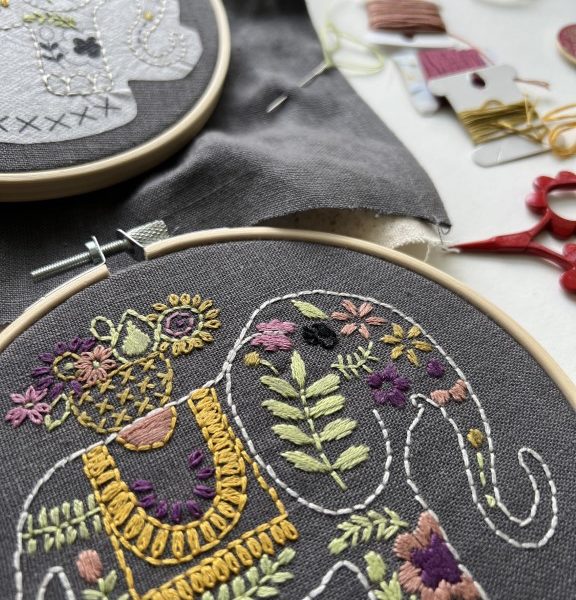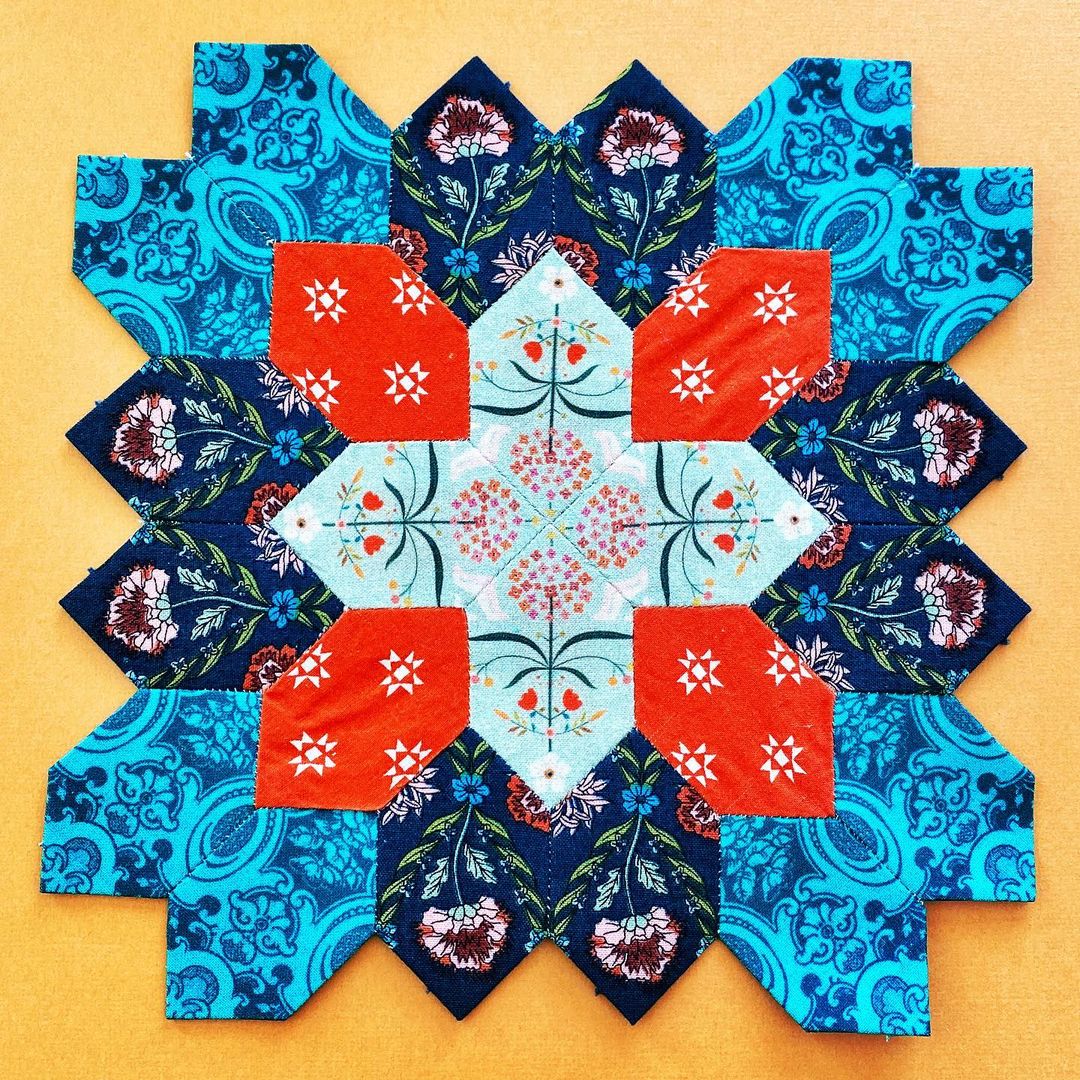We were delighted this month to sit down with Gary Sligh, member of the EGA Suwannee Stitchers Chapter in Florida and former Treasurer and current Assistant Director of the Sun Region. Gary is a real pillar of the needlework community. He owns a fiber shop, Gary Lee Sligh Fabric Arts, in Downtown Leesburg, Florida, broadcasts an illuminating FlossTube channel interviewing community members and exploring the cultural and historical importance of the needle arts, and hosted a TED Talk about The Legacy of Handmade Items. Keep reading to learn more about Gary and why he believes every needleworker should invest in preserving their own handmade heritage.
When did you start stitching? What drew your interest to needlework?
When I was in the sixth grade, my teacher could knit and teach at the same time, and I thought that was remarkable. I went home and learned to knit on two pencils, and my teacher helped me move forward. My mother had an old crewel kit that she had never started, and I worked that piece, which began my love for needlework.
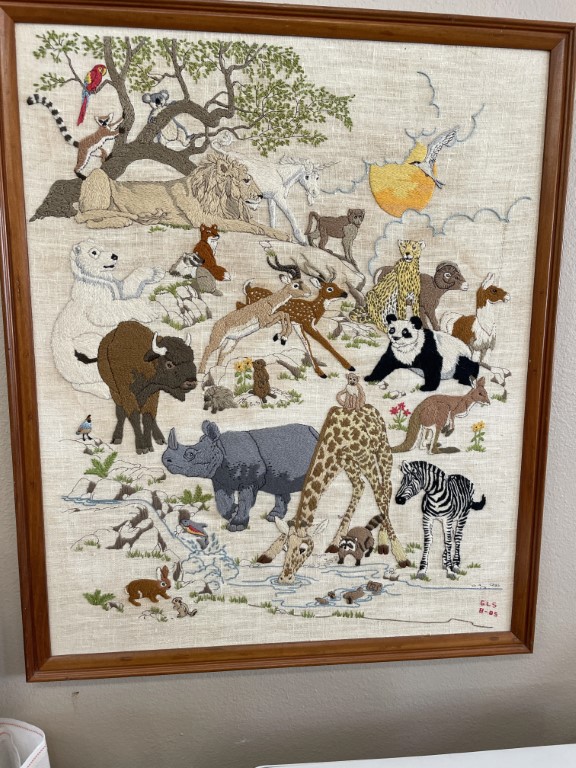
You own a shop in Florida called Gary Lee Sligh Fabric Arts. What inspired you to open in 2018?
I have wanted a shop and the community that comes with it for many, many years. When I retired from my career as a college administrator, I decided to take the plunge and open a shop. I have loved every moment of the experience.

Do you have a favorite needlework practice? Why is it your favorite?
Cross stitch is my favorite, and I especially love doing full-coverage pieces made from digital photographs. I love the complexity of these pieces, and I love seeing the image slowly emerge as I add in the various colors.

You lead a series on Flosstube called The Legacy of Handmade Objects and hosted a TED Talk on the same topic. How did you come to this particular focus in your work?
From the beginning, from my sixth-grade teacher to my grandmothers, older adults have graciously shared their love of handmade objects with me. I love history and I love knowing where certain skills and objects come from.
As I have progressed through the years and come to learn many aspects of fiber art, from stitching to weaving and so forth, I have become fascinated with how these skills and the stories that go with them have been passed down throughout the history of humanity in all cultures.
What do you mean by handmade legacy? What practices fall under the term of handmade legacy for you?
Handmade legacies are really any set of skills that create things directly with human hands. I include many skills under this category: woodcraft, fiber art, metalwork, soap-making, baking and cooking, and almost anything that was once created by humans.
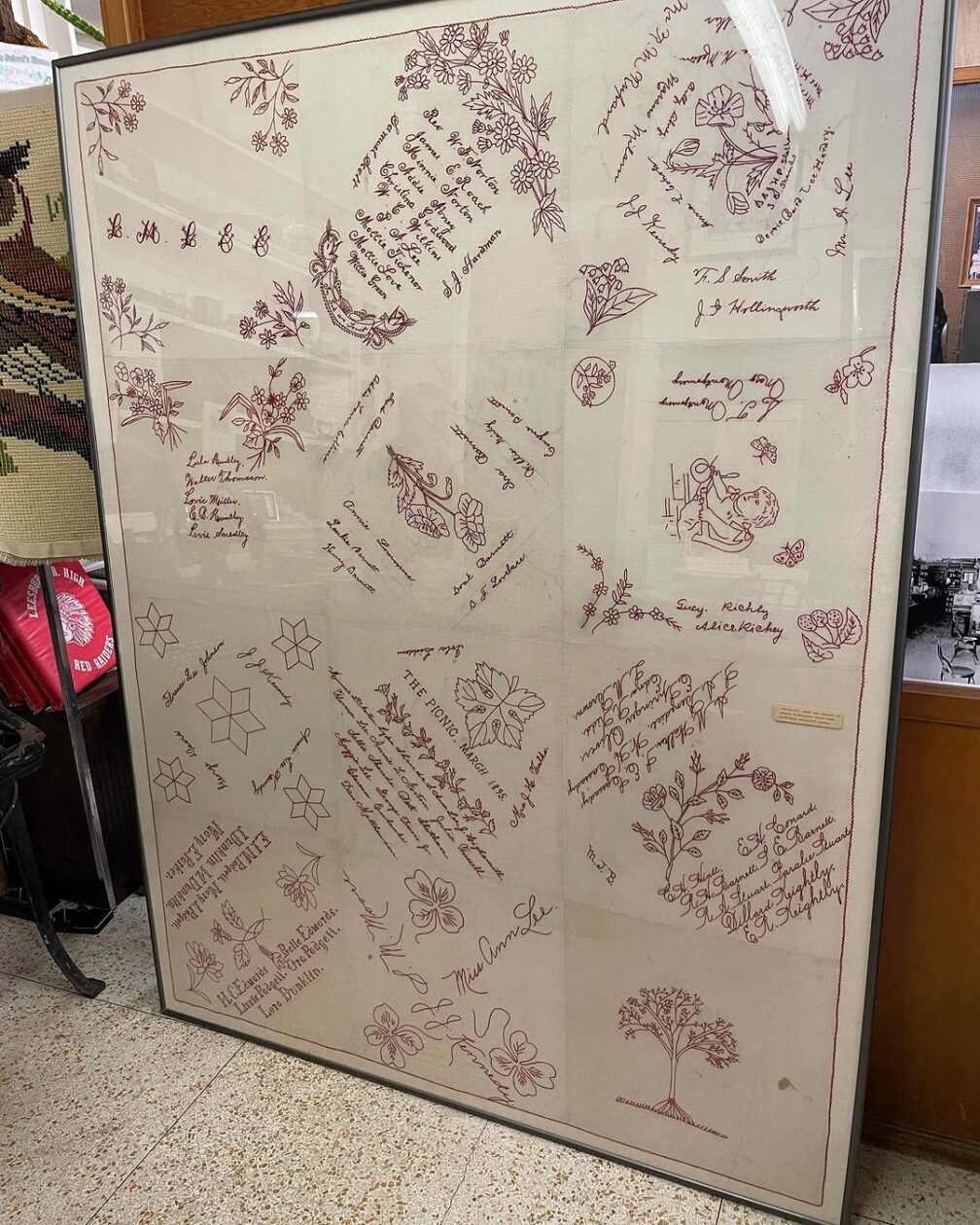
Why did you focus your Flosstube channel on The Legacy of Handmade Objects? What is the aim of your channel, and what do you hope each episode communicates to viewers?
When I first started thinking about handmade objects, I realized very quickly that it covers a vast array of skills and practices. My Flosstube is a way of sharing history and practice, focusing mostly on objects made with fiber. Having said that, I bring in history, culture, religion, and any number of other areas of study when they overlap with my interest in fiber and stitching. My channel is a pretty eclectic combination of ideas and images.
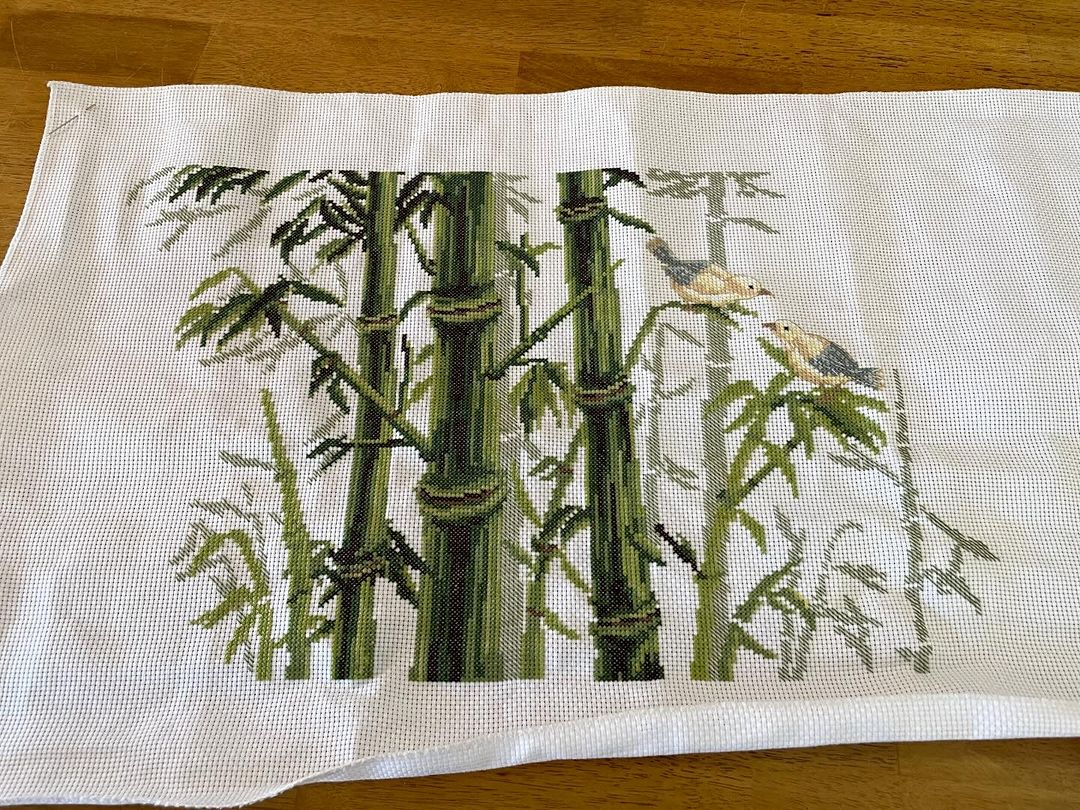
Which handmade objects hold personal stories for your family legacy?
I have a wonderful hand-turned bread bowl used by my great-grandmother Lucy Settles. I have a beautiful trapunto framed piece made by my Granny Sligh. I especially treasure these two pieces as they help unravel my own love for stitching and cooking.
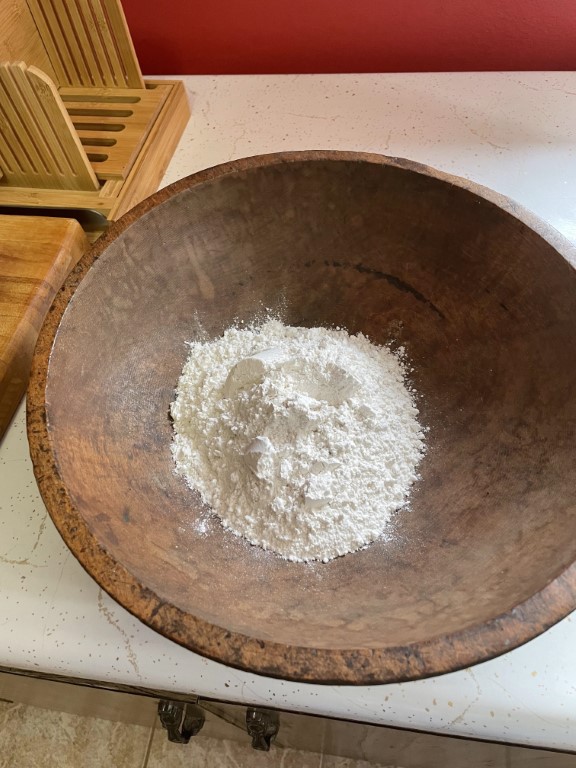
Your preservation efforts involve both a tactile and an oral tradition, maintaining needlework as well as communicating the stories of those pieces to your community and family. Why do you believe the stories are as important as the needlework pieces?
I hear from folks all the time that they create beautiful needlework pieces but their children and other family members do not want them. I think that in order for future generations to appreciate these works of art, they need to be able to connect them with their own family story. That is why I think it is essential to make the stories of how and when pieces were created a part of the ongoing story of our families and of human progress around the world.

In practice, needlework is a solo activity. Yet so many needleworkers crave community. You’re a self-proclaimed introvert who joined the EGA Suwannee Stitchers Chapter in Florida and was Treasurer of the Sun Region. Why did you choose to join the EGA, and what advice would you give to other stitchers craving community?
From the time that I began working with fiber, friends and family have shared their own expertise to help guide me. That is the chief reason that I join groups like EGA because I want to continue learning, and I love the idea that I can now be part of that tradition and pass on the things that I love to do.
Everyone can find a group of folks who love to stitch or create. From online communities to in-person stitch-ins and groups, there is definitely a group for everyone.
What advice do you have for younger stitchers just starting their needlework practice?
Since younger stitchers are more comfortable with online resources, that is a great place to start. But don’t ignore the value of finding older stitchers and connecting with them. All the YouTube videos in the world cannot replace the knowledge that one can gain in an hour of stitching with a veteran stitcher.
Do you believe it’s important for stitchers to refer to historical needlework pieces, and if so, why?
It is vital in my opinion to connect with historical pieces. Not only do they help us understand more about our modern practices, but they inform our own designs and projects. If you want to make a sampler, for instance, knowing about the history of samplers and seeing examples of historical pieces makes the current work even more exciting. We are part of a great movement of stitchers and fiber artists that stretches back 30,000 years or more.

Do you have any resources to recommend to needleworkers interested in learning more about the value of handmade objects?
There are so many resources today that the problem for a modern stitcher is how to choose. The one book that I always recommend is Threads of Life by Clare Hunter. Her wonderful work helps to tie together the various aspects of fiber and helps the reader to understand that our work is much more than just an isolated and worthless piece of craftwork.
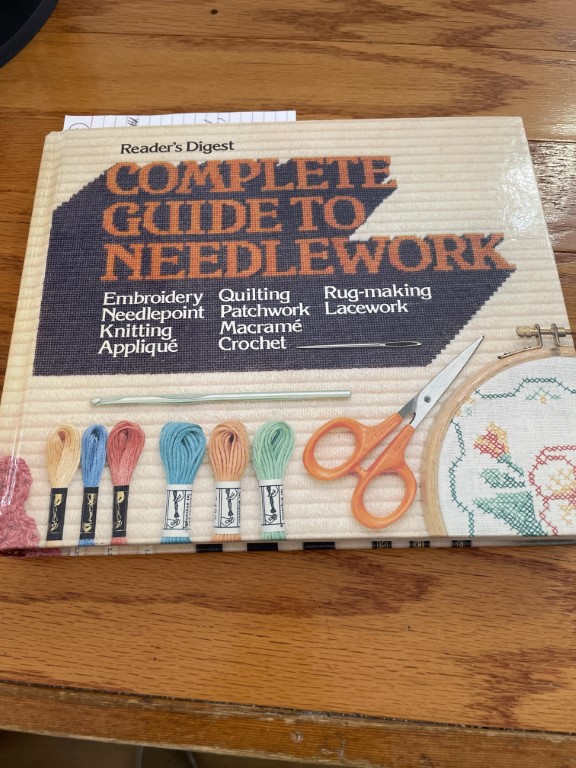
On a more practical skills level, the Reader’s Digest Complete Guide to Needlework is still my favorite resource for everything related to fiber.
Thank you to Gary for talking with us! Interested readers can learn more about Gary’s work on his blog and FlossTube Channel, and on Facebook and Instagram.
